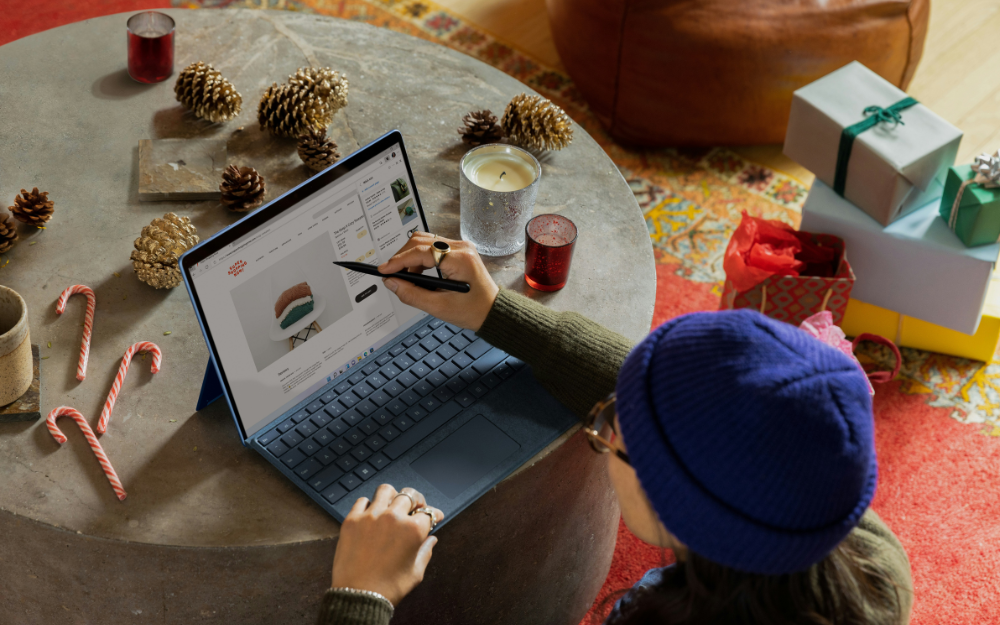Online shopping can be a convenient way to buy the things you want. Get the most out of internet shopping by staying safe online.

How to protect yourself online
Not sure if you should trust a website with your personal information? Here are some things to look out for.
Check the website
Before you enter personal or payment details online, do some checks. If you haven’t heard of the business, read independent reviews that aren’t on the seller’s website.
Keep your details safe
Password-protect all your devices and make sure they have the latest updates installed.
For tips on creating a strong password, see the Australian Cyber Security Centre (ACSC).
If you’re using a public Wi-Fi network, don’t send or receive sensitive information — for example, don’t log in to your online banking or use your credit or debit card.
Only use an official company app from the Apple Store or Google Play store.
Use secure payments
Avoid saving payment information to an online shopping account.
Pay for your items using PayPal, PayID, PayTo or a credit card. These are more secure ways to pay and offer another level of protection if something goes wrong.
Never use direct bank deposits, money transfers, or digital currencies like Bitcoin. It’s rare to recover money sent this way.
Check your bank statements
If you shop online, check your credit or debit card and bank statements regularly. Make sure you’ve been charged the right amount.
If you see something you don’t recognise, this could be a sign that a scammer has your personal details.
What to look out for when you shop online
Follow these steps when you shop online.
Find out if the seller is overseas
If the seller is not in Australia, you may not have the same consumer rights. You might also find it hard to contact them for a repair, replacement or refund. For more information, see the ACCC website.
An overseas seller might also charge you an international transaction fee. Also make sure to check if you will be charged an international transaction fee by your credit or debit card provider.
Avoid being charged two fees: check if your credit or debit card provider charges a fee for overseas transactions.
Record your online purchases
Keep a record of your online purchases, including photos and descriptions of the items. In particular:
- Make sure you receive an email confirming your purchase before closing your browser.
- Write down your receipt or reference number.
- Check that you’ve been charged the right amount.
Know your rights as a buyer
Read the terms and conditions carefully, including:
- the returns policy
- postage or delivery fees
- any packaging or handling charges
- local currency costs, including currency conversion fees if the purchase is from overseas
- any international transaction fees
- any import duty or taxes
Take care with buy now pay later
Buy now pay later service, like Afterpay, Humm or zipPay, let you pay for something in instalments. You might pay every fortnight, instead of paying the full amount upfront.
You don’t pay interest on the purchase. Instead you’re charged fees. It’s easy to overspend or lose track of how much you owe. So make sure you can afford the repayments.
What to do if something goes wrong
Sometimes, even when you’re careful, things can go wrong:
- You don’t get what you pay for.
- It’s not in good condition.
- You’ve been overcharged.
Follow these steps to get a refund or exchange.
1. Know your rights
Visit the ACCC’s page to find out about your rights as a customer.
2. Contact the seller
Check the seller’s website for details on how to contact them or make a complaint. It may have been a mistake — if so, explain the issue to them and suggest how they can fix it.
3. Contact consumer affairs in your state
If you can’t sort things out with the seller, contact the consumer affairs office in your state. They may be able to help you sort things out with the seller. You can also complain to the ACCC about the business.
4. Call your bank
If you used your credit or debit card to shop online but didn’t get what you paid for, contact your bank. They may be able to give you a chargeback.
If you used a PayPal account, follow PayPal’s dispute resolution process.
If you think you’ve been scammed report it to Scamwatch.
Reproduced with the permission of ASIC’s MoneySmart Team. This article was originally published at https://moneysmart.gov.au/online-safety/online-shopping
Important note: This provides general information and hasn’t taken your circumstances into account. It’s important to consider your particular circumstances before deciding what’s right for you. Although the information is from sources considered reliable, we do not guarantee that it is accurate or complete. You should not rely upon it and should seek qualified advice before making any investment decision. Except where liability under any statute cannot be excluded, we do not accept any liability (whether under contract, tort or otherwise) for any resulting loss or damage of the reader or any other person. Past performance is not a reliable guide to future returns.
Important
Any information provided by the author detailed above is separate and external to our business and our Licensee. Neither our business nor our Licensee takes any responsibility for any action or any service provided by the author. Any links have been provided with permission for information purposes only and will take you to external websites, which are not connected to our company in any way. Note: Our company does not endorse and is not responsible for the accuracy of the contents/information contained within the linked site(s) accessible from this page.


